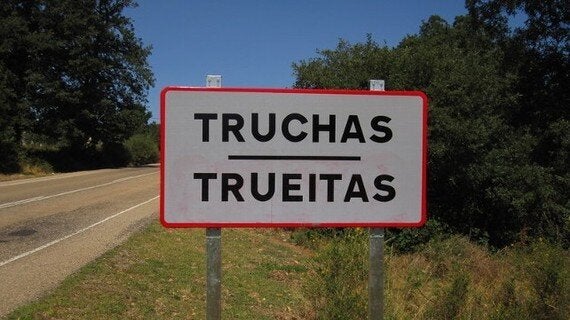
Photograph: Xaquín
Spain, known as the land of sol, siestas and sangría, is less well known for the diversity of its linguistic heritage. Though most people could probably identify Basque and Catalan as languages spoken in Spain, the Iberian Peninsula is home to a number of minority languages and dialects you've probably never heard of.
1. Galician
Even though it has 2.4 million native speakers and is Spain's third most spoken language, it's surprising how many people have not heard of Galician. That's maybe because Galicia's most famous residents - including current Spanish PM Mariano Rajoy, the 20th century writer Ramón Valle Inclan, and Spain's late dictator Francisco Franco - are known for being Spanish, not Galician, speakers. Galician and its neighbour across the border, Portuguese, were originally one and the same language, Galician-Portuguese, a highly prestigious medieval language famous for its lyric poetry. Although Galician then became a low prestige language for many centuries, today it is co-official with Spanish in Galicia and has its own publicly-funded television channel.
2. Aragonese
Aragon, the land of Henry VIII's first wife and the 18th century painter Francisco de Goya, is also home to the luenga aragonesa, or Aragonese language, which descends from the now extinct medieval language Navarro-Aragonese from North-East Spain. Aragonese has a core of native speakers in Aragon's remote Pyrenean villages, but is understood by many more people in the surrounding areas, and is mutually intelligible with neighbouring languages such as Castilian Spanish and Astur-Leonese. Aragonese is protected by local laws, and has its own language academy, but, like many of Spain's minority languages, is still considered endangered by UNESCO.
3. Judeo-Spanish
Judeo-Spanish, also known as Ladino, is a language from Spain that hasn't been spoken in Spain since 1492, when the Jewish population was expelled from the country by the Spanish monarchs. Though since 2015 their descendants have been able to apply for dual Spanish citizenship, Judeo-Spanish is now mostly spoken in Israel, Turkey and Greece. Because the last time it was used in Spain was over 500 years ago, Judeo-Spanish is a linguistic time capsule, and sounds more similar to Medieval Spanish than modern Spanish. It's also the only Spanish language to be written in Hebrew script.

Bilingual Spanish-Leonese roadsign
4. Leonese
One half of the Astur-Leonese language branch, Leonese descends from the everyday Latin spoken in the geographic area that would become the medieval Kingdom of León. The kingdom's capital, also called León, or Llión in Leonese, was founded by the Roman Seventh Legion. León/Llión, which means 'lion' in today's language, actually comes from the Latin name of the capital's founders, legio septima gemina, meaning 'the twin seventh legion'. Despite a flourishing medieval literature, history has not been kind to the llingua llionesa, which is now a UNESCO endangered language that, unlike its other half Asturian, has no official status in Spain.
5. Aranese
Less well known than its sister dialects of Gascon and Occitan in France, Aranese is spoken in the Valley of Aran (Val d'Aran), one of only two areas of Spain on the Northern side of the Pyrenees. Even though it only has around 3,000 native speakers and is used in a small geographical area, Aranese has co-official status in its home region, Catalonia, and is taught as a compulsory subject in schools in the Val d'Aran. You can even pick up some Aranese yourself thanks to the University of Barcelona's multilingual conversation guide.